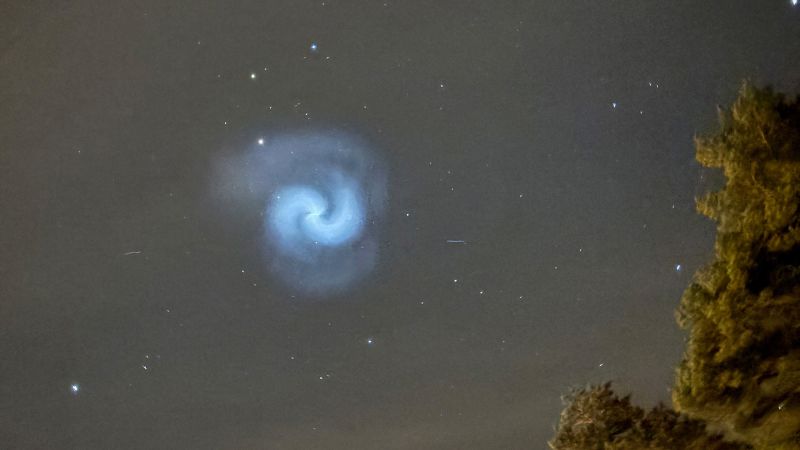The ongoing advancements in space exploration often lead to unexpected phenomena, particularly visual spectacles that attract the attention of many onlookers across the globe. News outlets like CNN highlight these fascinating occurrences through engaging articles. Recently, stunning scenes manifested in the skies as new rocket launches prompted observers to capture what resembled spiraling shapes or glowing orbs. These dramatic visuals have predominantly emerged during rocket launches, as the frequency of such events sees a significant uptick.
Jonathan McDowell, an esteemed astrophysicist affiliated with the Harvard-Smithsonian Center for Astrophysics, articulated that witnessing these occurrences — especially at high altitudes in the rarified atmosphere where low densities prevail — remains a novel experience for many. The visual phenomena gained considerable attention following a SpaceX Falcon 9 rocket launch from Florida intended to deploy a spy satellite for the U.S. military. As the rocket ascended northeastward, countless individuals across the United Kingdom and continental Europe were treated to a stunning display.
Platforms like social media quickly buzzed with reports of “strange shapes” fluttering across the night sky shortly after the Falcon 9’s launch. The Met Office, which serves as Britain’s national weather service, confirmed that these unusual shapes were likely linked to the rocket’s activity. Such phenomena have become rather commonplace with SpaceX launches, with images often sharing similarities to what observers have described as a “jellyfish” effect. This visual marvel manifests through a large teardrop shape lighting the sky, stretching gradually as the rocket completes its ascent.
Despite the superficial resemblances, experts are quick to note that the visual experiences epitomized by both the “jellyfish” and the spiral formations are distinct manifestations. The spiral shapes observed post-launch are predominantly a result of the Falcon 9’s second stage thruster re-engaging its engines while still carrying leftover fuel post-deployment. This sequence usually occurs just before the second stage begins its descent, which produces spiraling patterns in the sky as it ejects the unused fuel. Such deorbiting protocols are standard procedures implemented by SpaceX to ensure safety and minimize debris in Earth’s orbit.
The mechanism of how the Falcon 9 operates involves a two-stage structure, which collectively supports the thrust required for launching satellites and other payloads. The first stage, equipped with nine powerful engines, provides the essential lift-off propulsion. Importantly, this initial stage can later land back on Earth through a controlled descent, promoting sustainability in space missions. Contrarily, the second stage — responsible for achieving orbital velocity — launches after the initial phase. It’s designed to burn fuel to reach speeds exceeding 17,500 miles per hour (28,163 kilometers per hour).
Rockets generally eject excess fuel once their major duties are completed, which causes the upper stages of rockets to spin, creating the unforgettable spiral shapes that so captivate observers. Dr. Christopher Combs, an academic at the Klesse College of Engineering and Integrated Design at the University of Texas, explained that this action is akin to a “garden hose effect,” where the motion of fuel residues creates a similar swirling phenomenon as water disperses from a hose left unsteady.
Conversely, the jellyfish phenomenon arises during the ascent phase where the lower stage releases exhaust fumes, creating a plume that fans out distinctly as the rocket climbs through the atmosphere. Conditions that facilitate the observation of these phenomena require the right time frame, usually occurring at dawn or dusk when sunlight catches the displaced particles effectively against the dark sky. Furthermore, McDowell explains that observers often misinterpret the altitude of such launches due to the visually deceptive light displays, which can mistakenly suggest that the rocket is much closer to the Earth than its actual distance of sometimes 200 miles up.
As humanity continuously advances its quest for understanding the cosmos, it’s essential for the public to engage with the marvels of rockets and space expeditions. The upwards trajectories of the Falcon 9 and similar vehicles herald a future filled with possibilities as awareness and enthusiasm for space exploration grow. With the rate of rocket launches seeing a dramatic rise — now exceeding 250 annually — opportunities for witnessing these awe-inspiring light shows will only increase, fostering curiosity and a deeper appreciation for the universe among viewers on Earth.












